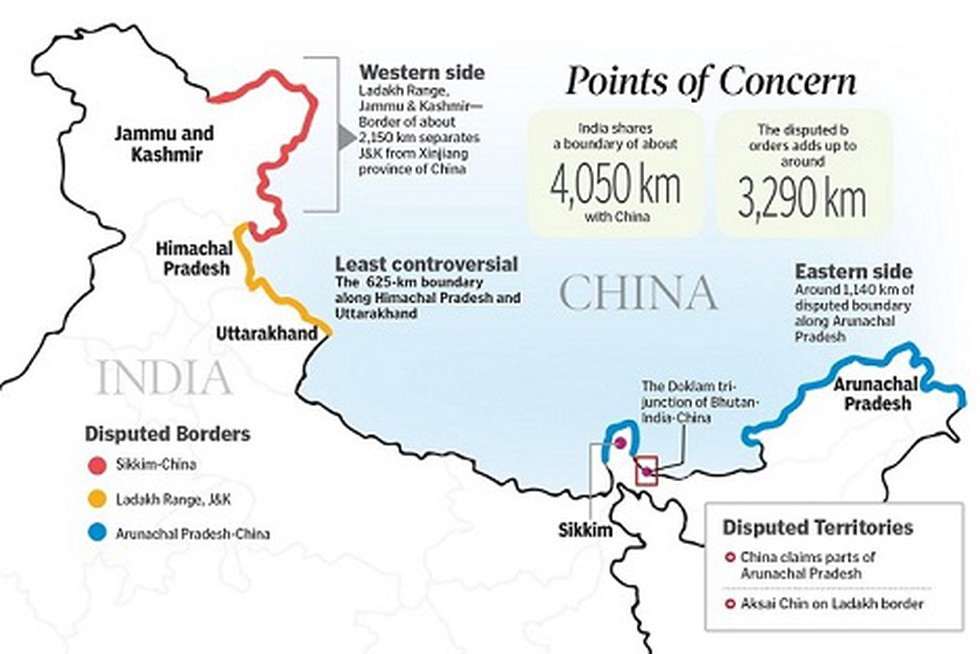-
10 Jul 2025
GS Paper 2
International Relations
Day 22: From BRICS to SCO, India and China often cooperate multilaterally but clash bilaterally. Examine the paradox and its implications for regional stability. (250 words)
Approach :
- Briefly introduce the paradoxical nature of India- China relationships.
- Examine the paradox and its implications for regional stability.
- Conclude with a suitable way forward.
Introduction:
India and China, Asia’s two leading powers, exemplify a geopolitical paradox—they cooperate in multilateral forums like BRICS, SCO, and G20, yet remain adversaries bilaterally, primarily due to border disputes and strategic rivalry. This duality has critical implications for regional stability, economic integration, and Asian security architecture.
Body
Multilateral Cooperation: Convergence of Global Interests
- BRICS: Both countries support the idea of a multipolar world and advocate for reforms in global institutions like the UN Security Council, World Bank, and IMF. The establishment of the New Development Bank (NDB) and Contingent Reserve Arrangement (CRA) under BRICS reflects efforts toward an alternative financial order.
- SCO: India and China jointly participate in counter-terrorism drills like “Peace Mission”, cooperate on regional stability in Afghanistan, and endorse connectivity through Chabahar and INSTC, even as China pushes Belt and Road Initiative (BRI).
- Climate Change & Trade: Both have coordinated positions at COP summits and WTO, often resisting protectionist policies by developed nations.
Bilateral Clashes: Strategic and Security Tensions
- Border Dispute: The Line of Actual Control (LAC) remains undefined. Incidents like Doklam standoff (2017), the Galwan Valley clash (2020)—the deadliest in over four decades—and continuing tensions in Eastern Ladakh have strained trust.
- Strategic Rivalry: India views China's expansionist posture in South Asia, especially through the China–Pakistan Economic Corridor (CPEC) and infrastructure projects in Nepal, Sri Lanka, and Bangladesh, as an attempt to encircle India—often referred to as the “String of Pearls” strategy.
- Indo-Pacific Divergence: India’s participation in QUAD with the US, Japan, and Australia is perceived by China as part of a containment strategy. Conversely, China’s assertiveness in the South China Sea and its naval expansion challenge India’s influence in the Indian Ocean Region.
- Trade Imbalance: Despite being major trading partners, with bilateral trade crossing $127 billion in 2025, India suffers from a large trade deficit (~$99 billion), further adding to economic asymmetry and dependence.
Implications for Regional Stability
- Security Fragility: Border tensions risk military escalation, as seen in Galwan, disrupting peace in the Himalayas and drawing in global powers.
- ASEAN and South Asia in Crossfire: Smaller nations often hedge between India and China, as seen in Sri Lanka’s handling of Chinese port projects or Myanmar’s balancing act between both powers.
- Weakening Regional Institutions: Prolonged bilateral distrust limits the effectiveness of regional groupings like SCO and BRICS, as they become venues of symbolic rather than substantive cooperation.
- Undermining Economic Integration: India's exit from RCEP (2020) due to Chinese dominance highlights how bilateral tensions spill over into broader trade negotiations.
Way Forward
- Strengthen crisis management mechanisms and maintain military and diplomatic hotlines.
- Promote issue-based cooperation in multilateral forums (climate, health, disaster response).
- Normalize economic relations while working to reduce trade imbalance.
- Build people-to-people contacts, academic exchanges, and confidence-building measures at the border.
Conclusion:
As foreign policy expert C. Raja Mohan notes, “Managing China’s rise is not about containment but shaping its behaviour.” The India–China paradox reflects deep strategic mistrust, yet both nations share the responsibility to uphold regional stability. The key lies in managing rivalry through stable coexistence, not confrontation.





